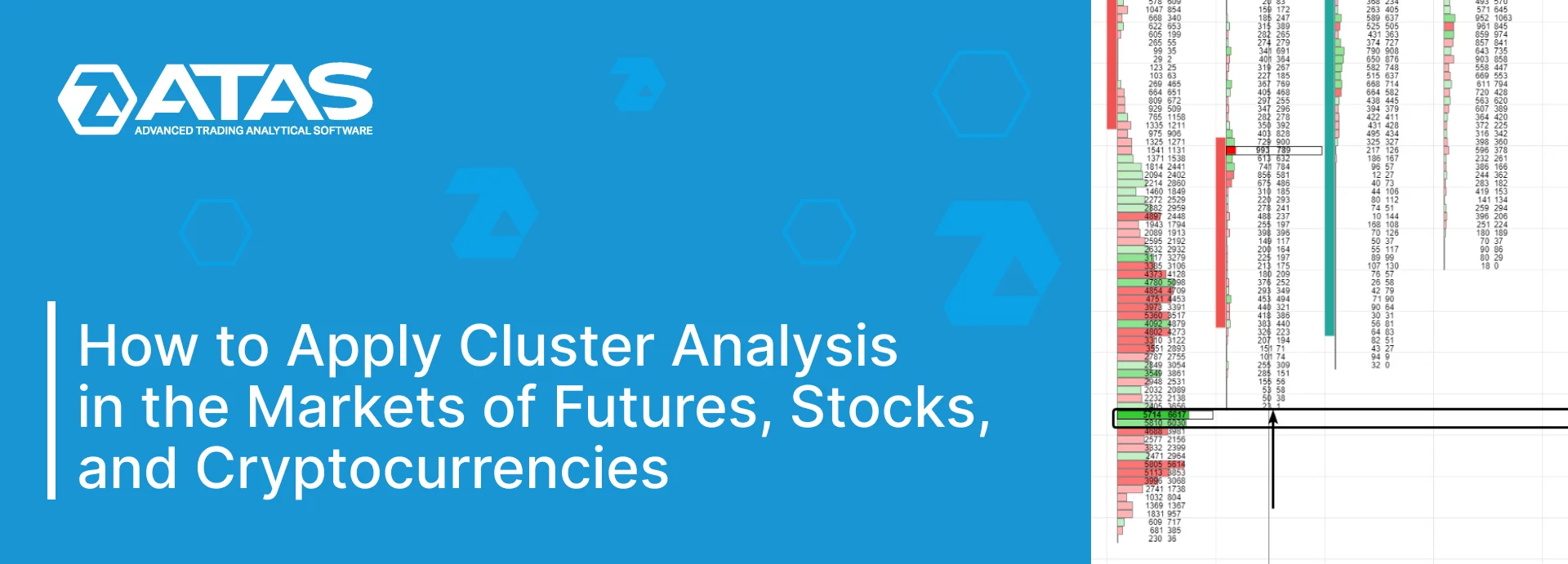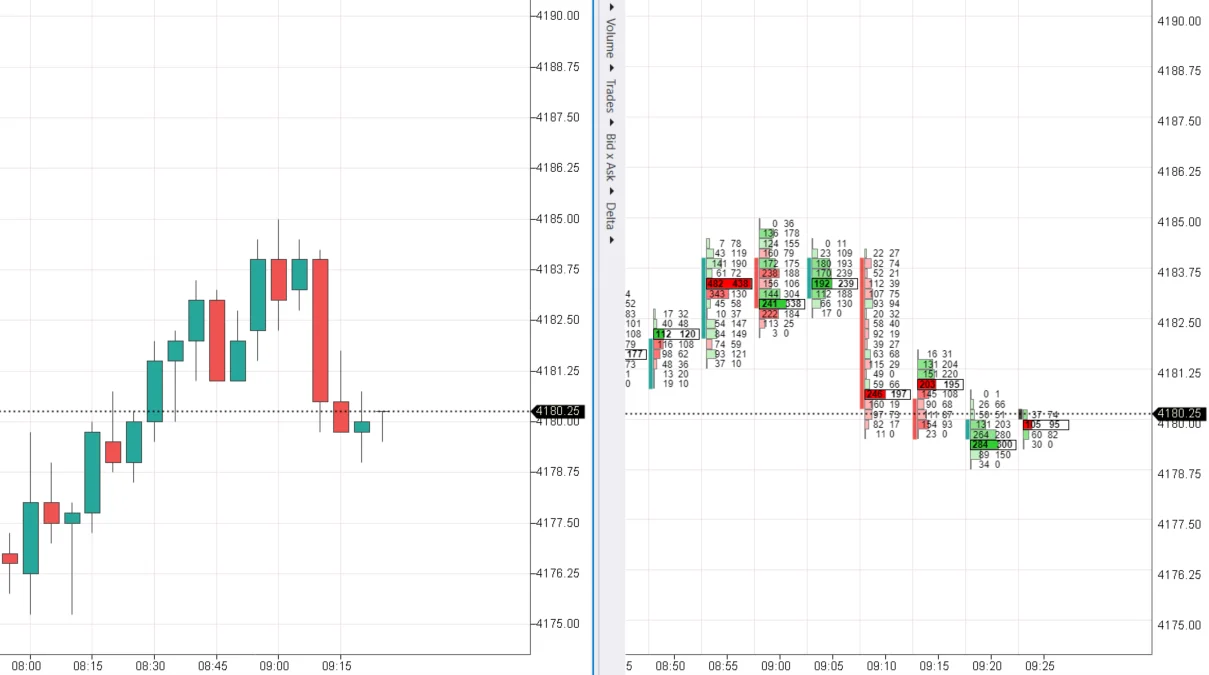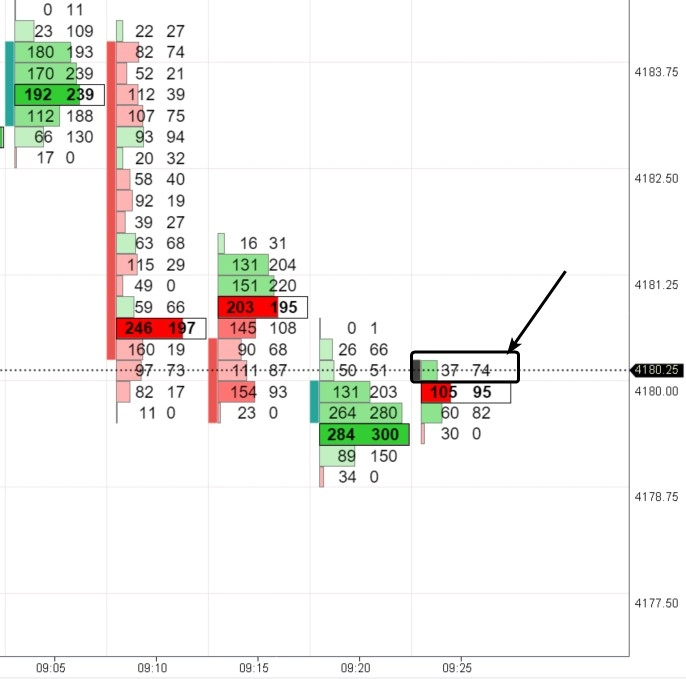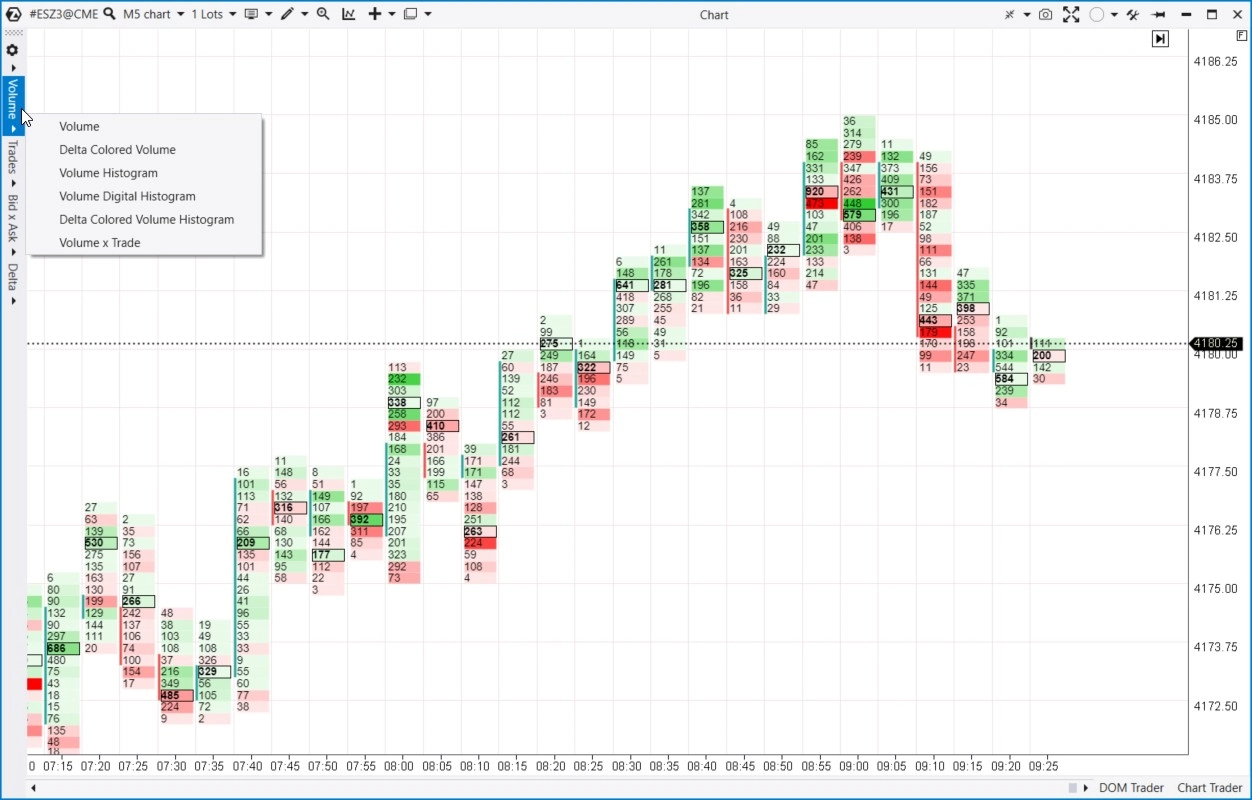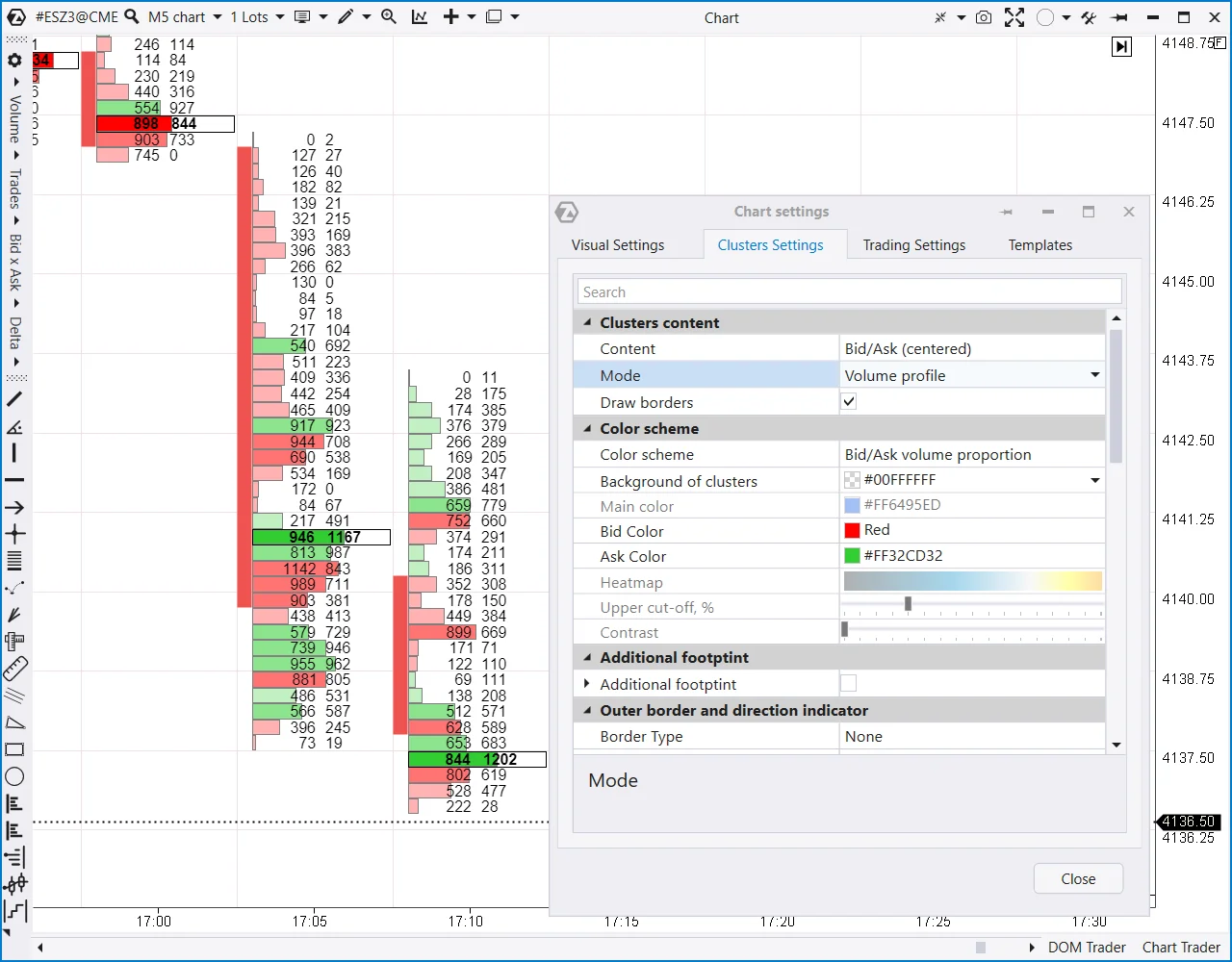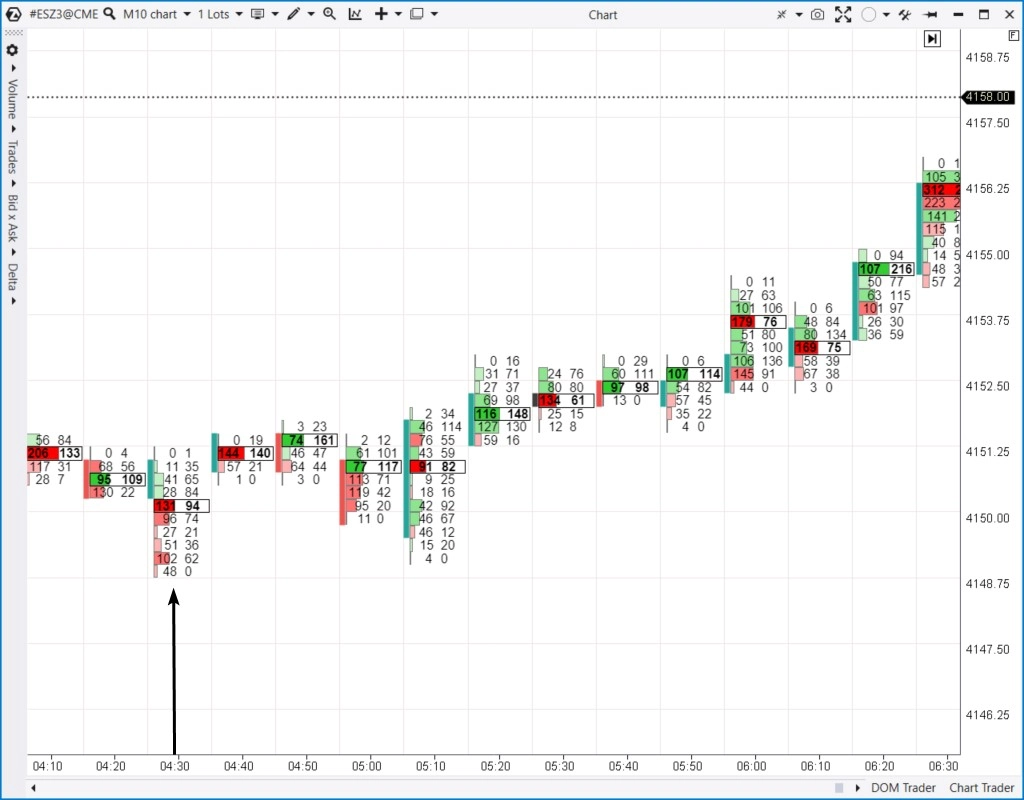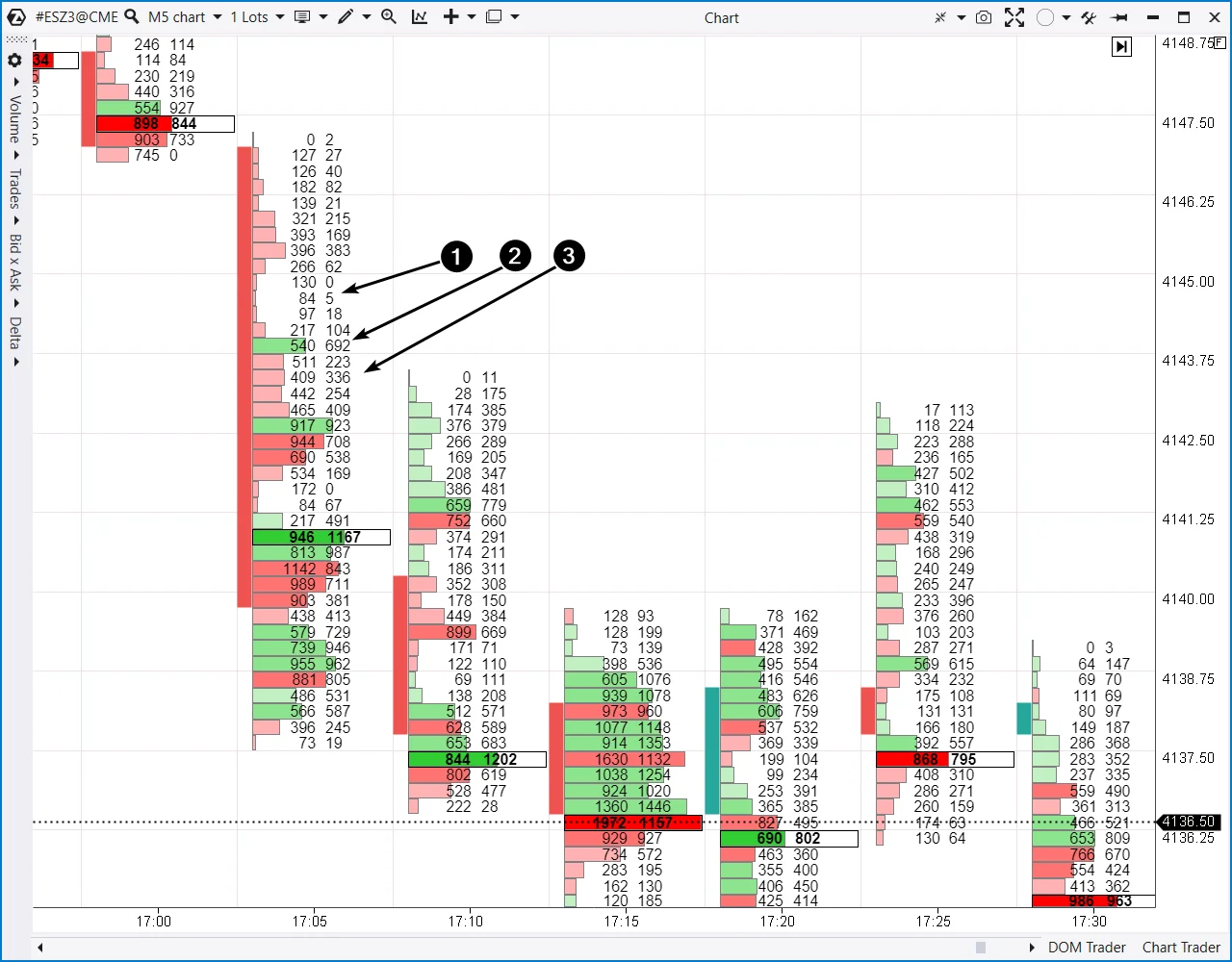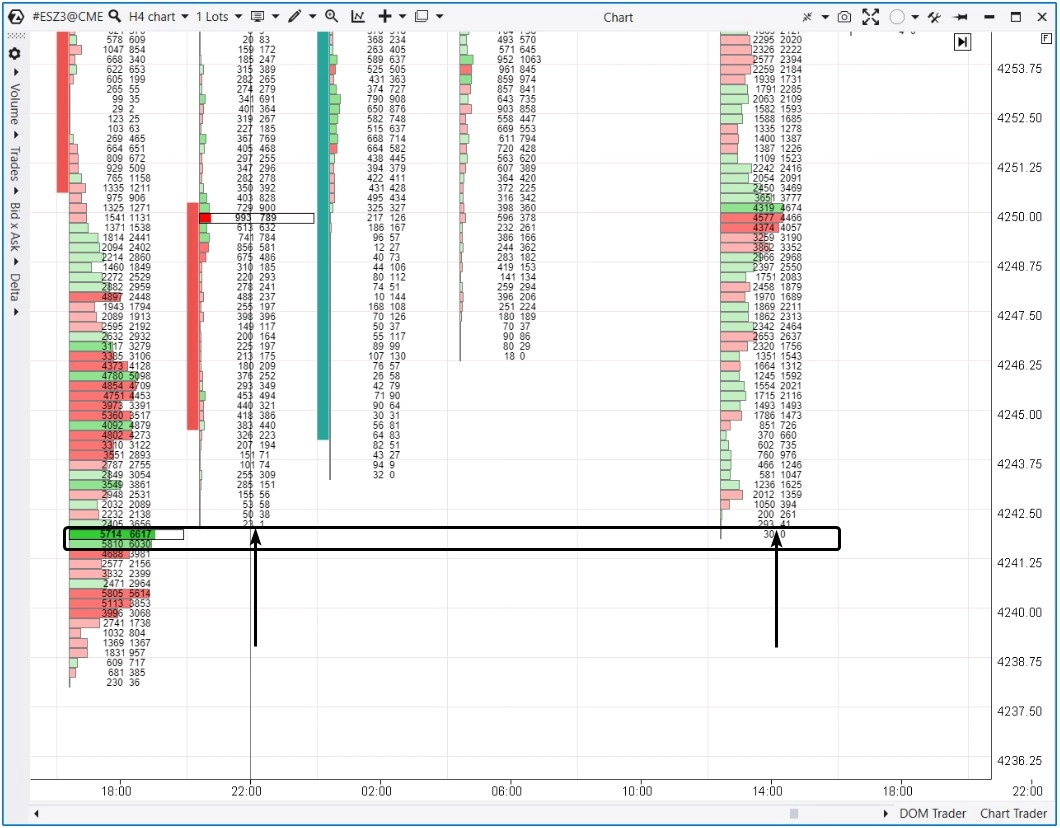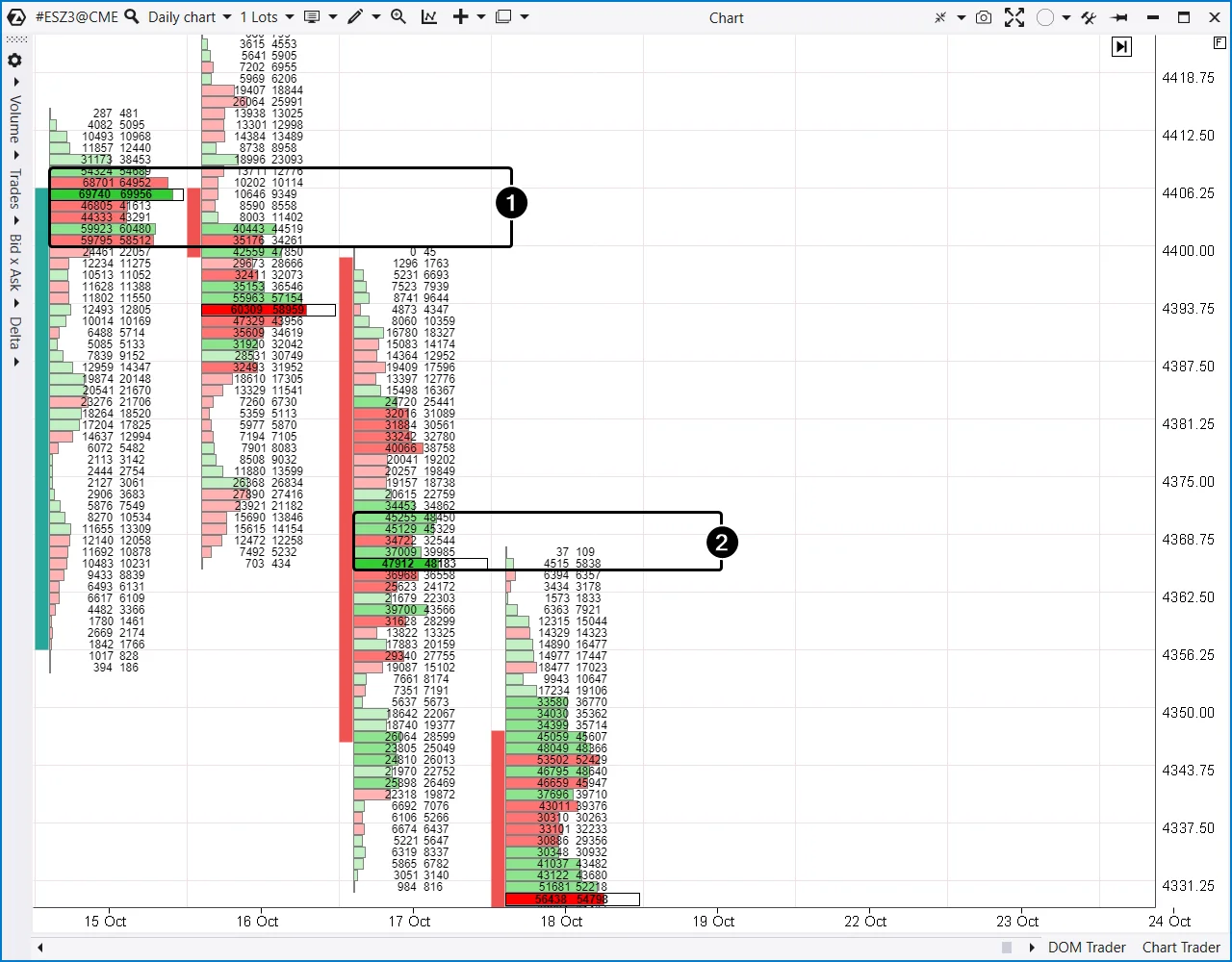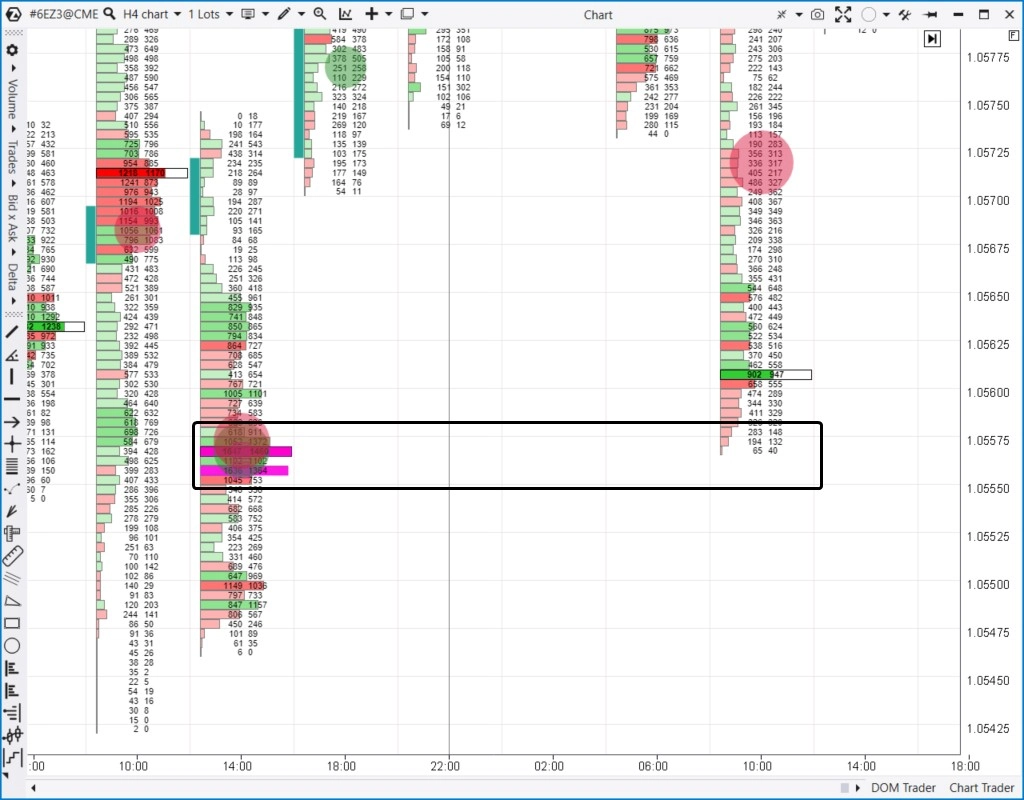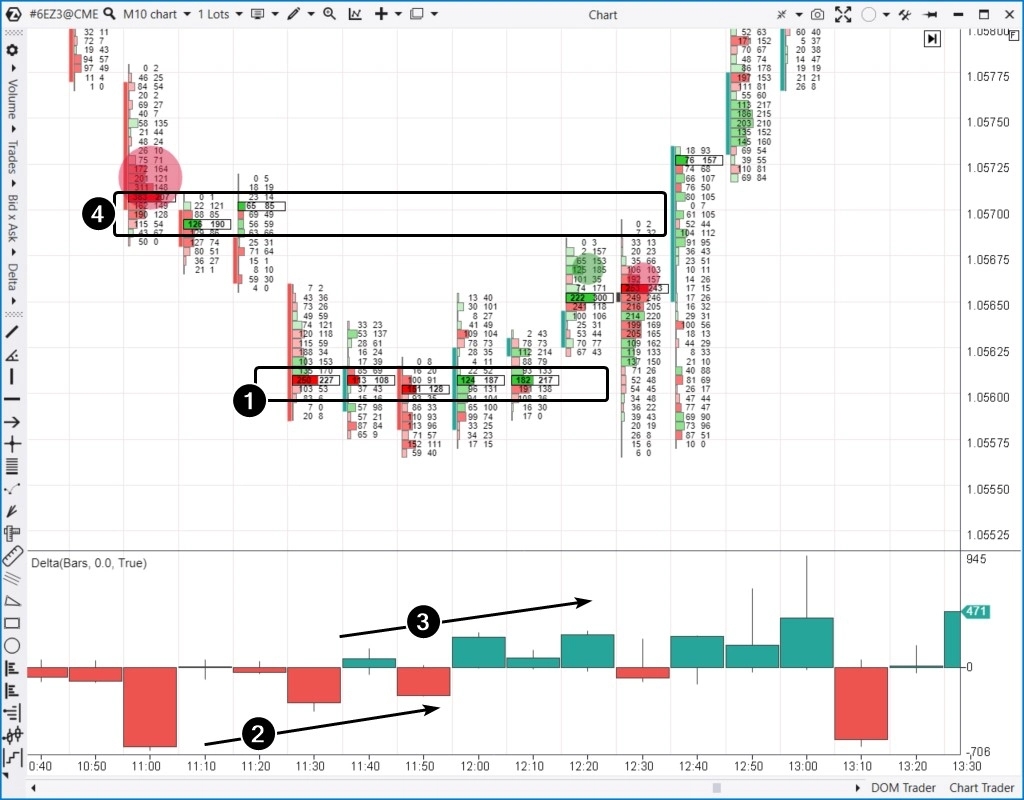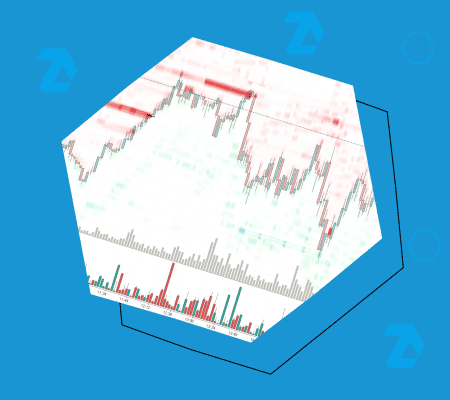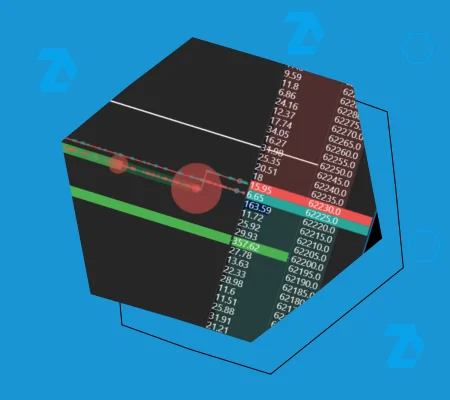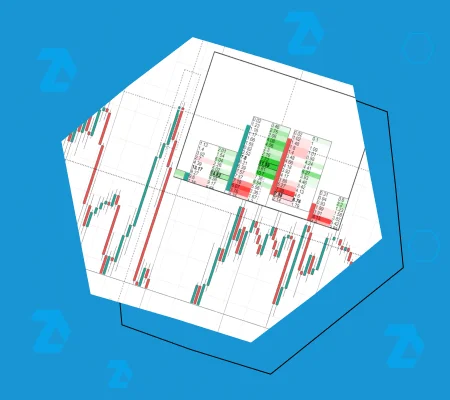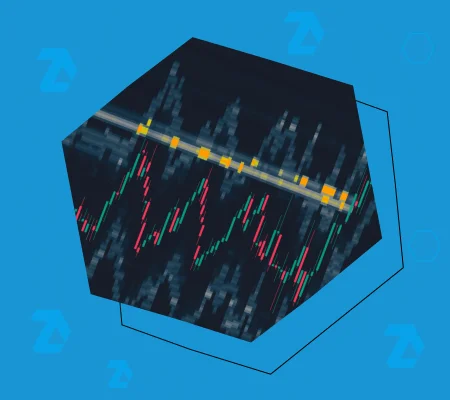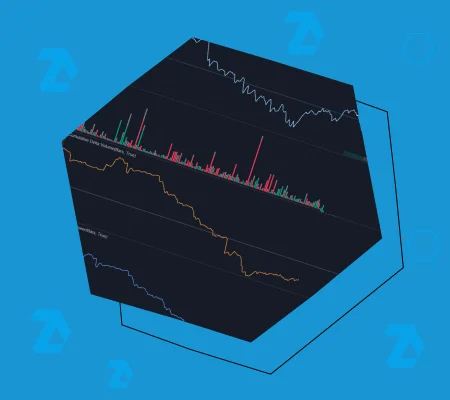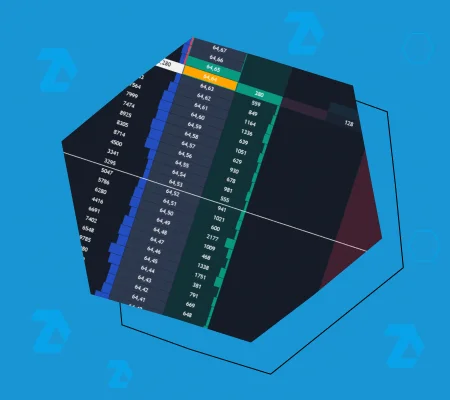The clusters show that the primary trading volume occurred in the narrow upper part of the candle (1) on October 15th. The following scenario is possible: initially, some positive news was published, and market participants hurried to buy contracts. However, their enthusiasm likely collided with a substantial wall of limit sells – trading was active, but the price did not fluctuate significantly.
The maximum volume shifted downwards the following day, which was a bearish sign. However, the situation seems more optimistic in traditional candlestick analysis: the high and low are higher, and the bearish candle’s body is not very wide. The positive sentiment sparked by the news on October 15th began to fade, and the overall market atmosphere turned more bearish. Buyers attempted to use the 4368.75 level, where they had succeeded the day before, and on October 16th, this also brought some success.
On October 17th, things took a different turn. The high-volume area (1) acted as resistance. The narrow cluster profile suggests that trading was relatively inactive, likely due to a lack of buyers. However, quite a few buyers were around the lows on October 16th. Perhaps they found the price attractive, but the closing happened in the lower part of the candle, significantly below the levels of clusters with maximum volumes (2).
On the following day, October 18th, the levels of trapped buyers acted as resistance. In other words, the support at the lows of October 15th-16th started to function as resistance – the principle of mirror levels in trading came into play.

